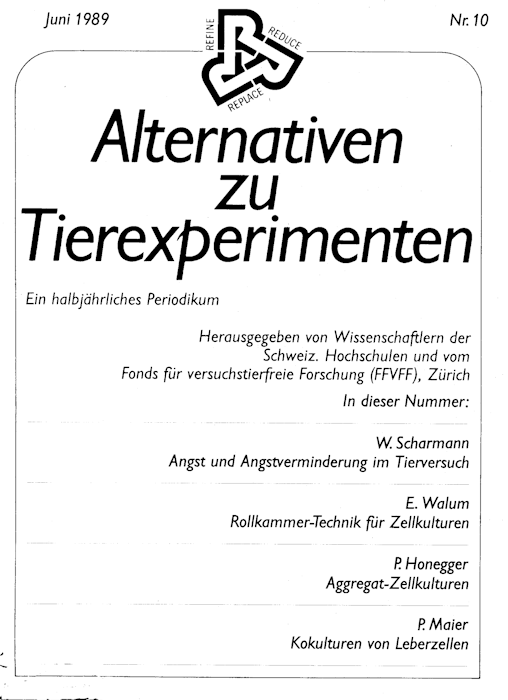[Development of hepatocyte cultures in toxicity testing] [Article in German]
Main Article Content
Abstract
The liver plays a key role in drug and xenobiotic metabolism. The probability of detecting the toxicity of unknown chemicals in vitro is therefore highest in liver cell cultures. In culture however, enzymes involved in xenobiotic metabolism are preferentially degraded within one to two days. In order to improve this situation, investigations were focused on the maintenance of a tissue-like oxygen tension and the maintenance of xenobiotic metabolism by means of heterotypic cell cultures. In conventional culture dishes, as a function of cell density, the oxygen diffusion is delayed and depleted. Using teflon membrane culture dishes, a stable, incubator-controlled, tissue like oxygen tension of 4% and 13% O2 respectively, was achieved. In co-cultures of hepatocytes, the auxiliary cells selected from livers of 10 day old rats maintained the liver cell-specific cytochrome P-450 dependent aldrin epoxidase up to one week, to 40% of the original value. The analysis of cellular DNA and protein content in hepatocytes by flow cytometry revealed specific ploidy shifts inducible by low oxygen tension, by fetal calf serum, by phenobarbital and dimethylsulfoxide. Chemically induced alterations in ploidy might be an indicator to detect compounds which interfere with growth and differentiation of hepatocytes in culture.
Article Details
Articles are distributed under the terms of the Creative Commons Attribution 4.0 International license (http://creativecommons.org/licenses/by/4.0/), which permits unrestricted use, distribution and reproduction in any medium, provided the original work is appropriately cited (CC-BY). Copyright on any article in ALTEX is retained by the author(s).


